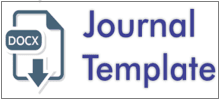TEACHERS’ TECHNIQUES IN TEACHING SPEAKING SKILL FOR X-GRADE STUDENTS AT SMA YPVDP BONTANG IN THE ACADEMIC YEAR 2022/2023
DOI:
https://doi.org/10.56630/jti.v5i2.504Abstrak
Speaking, one of the four skills in English is seen as the most essential skill for English learners to master. Most people’s success in learning can be seen by how well they can talk and communicate. Teachers must have techniques in place to support the learning process and achieve specific characteristics in the teaching and learning process. This research aims to discover the techniques used by English teachers in teaching speaking skills to eighth-grade students at SMA YPVDP Bontang in the academic year 2022-2023. The qualitative descriptive method was employed in this study. An English instructor at SMA YPVDP Bontang, who taught class X, was the focus of this investigation. Interviews and observation were used to gather data, which was subsequently analyzed utilizing interactive, and condensation data models—utilizing data triangulation for data validation. The researcher found that teacher use three techniques, namely role play, small group discussions, and debates, to teach speaking skills.
Referensi
Abdulbaki, K., Suhaimi, M., Alsaqqaf, A., & Jawad, W. (2018). The use of the discussion method at university: Enhancement of teaching and learning. International Journal of Higher Education, 7(6). https://doi.org/10.5430/ijhe.v7n6p118
Andestina, D. E. (2019). Teacher’s Techniques in Teaching Speaking Skill for Eight Grade Students at SMPN 7 Jambi City. In UIN Sutha Jambi.
Ba’dulu, A. M. dan H. (2010). Morfosintaksis. Jakarta: PT. Rineka Cipta.
Barzaq .M. (2009). Integrating Sequential Thinking Thought Teaching Stories in the Curriculum. Action Research. Al .Qattan Center for Educational Research AndDevelopment QCERD. Gaza.
Beckett, G. H., Amaro-Jiménezb, C., & Beckettc, K. S. (2010). Students’ use of asynchronous discussions for academic discourse socialization. Distance Education, 31(3). https://doi.org/10.1080/01587919.2010.513956
Brookfield, S. (2006). Discussion as a Way of Teaching. In Educational Studies (Vol. 32).
Christiani, A. (2019). Penerapan Metode Small Group Discussion dengan Model Cooperative Learning untuk Meningkatkan Hasil Belajar Siswa Sekolah Dasar. Jurnal Penilitian Pendidikan Guru Sekolah Dasar, 2(2).
Claxton, N. (2008). Using deliberative techniques in the English as a foreign language classroom: a manual for teachers of advanced level students. Idea.
Darmadi. (2017). Pengembangan Model dan Metode Pembelajaran dalam Dinamika Belajar Siswa. In Deepublish.
Dawkins, S., & O’Neill, M. (2011). Teaching literate language in a storytelling intervention. In Australian Journal of Language and Literacy (Vol. 34, Issue 3). https://doi.org/10.1007/bf03651864
Frazier, S., & Brown, H. D. (2001). Teaching by Principles: An Interactive Approach to Language Pedagogy. TESOL Quarterly, 35(2). https://doi.org/10.2307/3587655
Hamann, K., Pollock, P. H., & Wilson, B. M. (2011). Comparing the Benefits of Small-Group and Large-Class Discussions. SSRN Electronic Journal. https://doi.org/10.2139/ssrn.1544620
Harmer, J. (2007). How to teach English: new edition. In Pearson Education Limited.
Harmer, J. (2008). The practice of english language teaching with DVD. In Pearson Longman.
Oktaviani, I., & Aprison, W. (2022). Pelaksanaan Strategi Pembelajaran Experiential Learning Era New Normal Pada Mata Pelajaran Akidah Akhlak Di MTSN 6 Agam Kab. Agam. Jurnal Ilmiah Multi Disiplin Indonesia, 2(1).
Paquette, K. R., & Rieg, S. A. (2008). Using music to support the literacy development of young english language learners. Early Childhood Education Journal, 36(3). https://doi.org/10.1007/s10643-008-0277-9
Rambe, D., & Amri, Z. (2019). Teaching Discussion Text Using Point Counterpoint Method To Improve Speaking Ability Of Senior High School Students. Journal of English Language Teaching, 8(1).
Ratman, & Basrudin, Y. G. (2013). Penerapan Metode Tanya Jawab Untuk Meningkatkan Hasil Belajar Siswa Pada Pokok Bahasan Sumber Daya Alam di Kelas IV SDN Fatufia Kecamatan Bahodopi. Jurnal Kreatif Tadulako, 1.
Rusdiningsih, L. (2012). A Study on The Techniques for Teaching Speaking to the Second Year Students of SMP N 1 Trangkil (Doctoral dissertation, Universitas Muhammadiyah Surakarta).
Saleh, H. (2016). Penerapan Metode Buzz Group Discussion pada Matakuliah Struktur Aljabar untuk Meningkatkan Hasil Belajar Mahasiswa. Matematika Jurnal, 3(2).
Sardiman, A. (2005). Interaksi Dan Motivasi Belajar Mengajar Pedoman Bagi Guru Dan Calon Guru. In Jakarta: Rajawali Cet k V.
Setyawati, H. (2020). Penerapan Joyfull Learning Untuk Meningkatkan Hasil Belajar Mahasiswa Matakuliah Fisiologi Tumbuhan. Indonesian Journal of Mathematics and Natural Science Education, 1(3). https://doi.org/10.35719/mass.v1i3.39
Swadhika, H. L. (2016). USING NUMBERED HEAD TOGETHER TECHNIQUE TO IMPROVE SPEAKING ABILITY AT TENTH GRADE STUDENTS OF SMA MUHAMMADIYAH 1 MALANG (Doctoral dissertation, University of Muhammadiyah Malang).
Tasker, T., Johnson, K. E., & Davis, T. S. (2010). A sociocultural analysis of teacher talk in inquiry-based professional development. Language Teaching Research, 14(2). https://doi.org/10.1177/1362168809353871
Thaha, S., & Jambi, S. (2019). Teacher’S Techniques in Teaching Speaking Skill for Eight Grade Students At Smpn 7 Jambi City. In Thesis.
Thornbury, S., & Scott, T. (2012). How to Teach Speaking - Scott Thornbury. In Journal of Education and Practice (Vol. 3, Issue 2).
Wahyudi, D. (2017). THE USE OF QUESTIONING TECHNIQUE TO ENHANCE STUDENTS’ SPEAKING ABILITY. Indonesian Journal of Integrated English Language Teaching, 3(1). https://doi.org/10.24014/ijielt.v3i1.3971
Yuni, M. (2020). The Teaching of speaking skill at the eight grade students OF MTs Muslimat NU Palangka Raya (Doctoral dissertation, IAIN Palangka Raya).



















